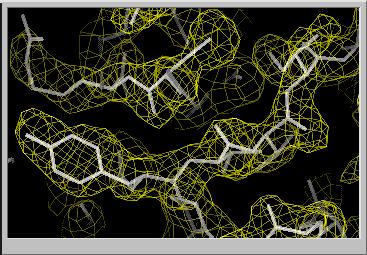|
What is resolve?
|
Resolve
is a program that improves electron density maps.
Resolve uses a maximum-likelihood
approach to combine experimental X-ray diffraction information with knowledge
about the expected characteristics of an electron density map of a macromolecule.
You can run resolve to improve your
maps right after using SOLVE or
another program to solve your structure.
|
|
How is resolve different
than other density-modification programs?
|
Resolve
uses a new mathematical formulation to directly maximize the total likelihood
of the phases. Other approaches rely on phase recombination where the optimal
statistical weighting of experimental and modified phases is not known. |
|
What is prime-and-switch
phasing and how does it minimize model bias?
|
Prime-and-switch
phasing primes density modification with biased model phases, then switches
entirely to an independent source of phase information (the likelihood
of the map) to remove the model bias. Prime-and-switch phasing can give
excellent unbiased maps even for crystals with very low solvent content
(provided that the biased model did have substantial correct phase information!) |
|
What are other new features
of version 2 of resolve?
|
In
addition to prime-and-switch phasing, version 2.0 of resolve can find non-crystallographic
symmetry in your heavy-atom sites and apply it automatically. |
|
How can I read more about
resolve?
|
The
mathematics behind resolve and examples of its use are described in the
article "Maximum likelihood density modification,"
appearing in Acta Cryst. D56, 965---972 (2000). |
